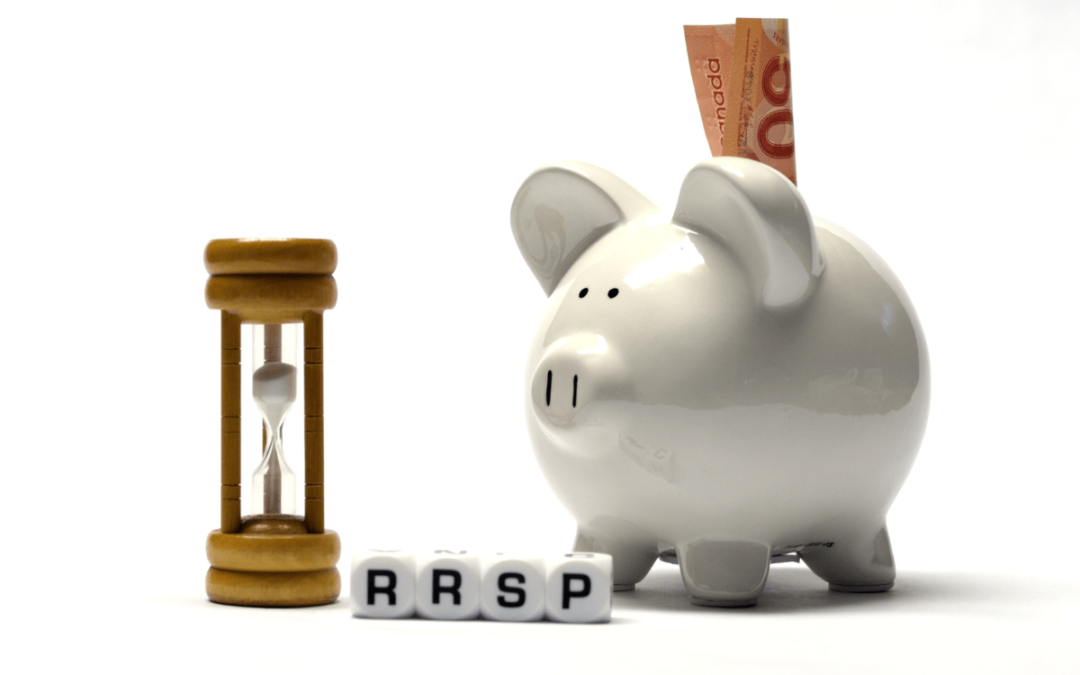As a professional realtor, you’d best stick to real estate, right? Invest in what you know. Or … from an unbiased perspective, is the RRSP (registered retirement savings plan) a good idea?
Many of us have heard of huge tax bills owing on an RRSP at death. A common reaction is that RRSPs are to be avoided. Some successfully save within the RRSP but lose money due to poor investment decisions. There are many other ways to invest for retirement, but understanding their basic math is worth your time. For most individuals, realtors included, it should at least, at minimum, be a piece of your retirement strategy.
The bottom line:
There are a myriad of variables in how your life could play out. Still, the RRSP is a sensible piece, even in a worst-case scenario. Similar to incorporation, the RRSP allows us to move highly taxed income to later years, where you may withdraw it at a lower tax rate. In the meantime, you can invest and grow it.
Crunching the numbers
Without stretching the assumptions and risk being misleading, let’s put some simple figures to it:
- Assume I don’t start saving until age 35 and quit at age 60. (Who started saving in their 20s anyway?!)
- After expenses, I earn $120,000. Assume I contribute $20,000 per year to an RRSP, over the 25 years.
- Let’s also assume I invest the money in a very boring, average-balanced mutual fund, which has had growth averaging 6 per cent per year, after fees — nothing special.
Total contributions would be 25 years x $20,000 or $500,000. Tax refunds vary by province with Nunavut being the lowest at 35 per cent and Prince Edward Island being the highest at 44 per cent. Let’s assume 40 per cent for simple math. So, refunds would total $200,000, making my true investment $300,000, not $500,000. Using the six per cent growth assumption, by age 60, my account balance grows to $1,096,851.
Then, the worst-case scenario … I die, with no spouse to transfer the account to, and the entire amount being fully taxable. Taxes would be ugly, ranging from the lowest in Nunavut ($452,881) to the highest in Nova Scotia ($556,283).
The estate would be left with between $643,970 and $540,568. So, after tax, very average assumptions paired with the worst-case tax scenario provided an after-tax return of between $343,970 and $240,568.
Even with very mediocre assumptions, that doesn’t seem so bad. If we improve any of the inputs, such as higher taxable income, later date of death, saving starting at a younger age or better investment returns, the results improve significantly.
If instead I live to age 90 and spend the money evenly each year, I can withdraw $75,175 per year for 30 years which is $2,255,250. Not so bad. Inflation will erode the purchasing power, but the numbers remain compelling. We would have turned $300,000 of after-tax dollars into, I don’t know, $1.7 million of after-tax dollars. If we live long, the results are a no-brainer.
Most clients pay tax of five per cent to 25 per cent. Taxes in retirement are much lower.
Take a salary, maximize your RRSP contributions
If you’re incorporated and want to build an RRSP, pay yourself a salary. Salary creates RRSP room. Dividends do not. Yes, you will have to pay into the CPP (Canada Pension Plan), both the employee half and the employer half. But it’s still worth it.
The maximum RRSP room for 2024 is $31,560. To create that much contribution room, you need to pay yourself a salary of $175,333. (Contribution room is up to 18 per cent of salary.) Use payroll software such as Wagepoint to make it routine and simple or just ask your bookkeeper.
If you have unused RRSP room and extra savings in your corporation, speak to your accountant about paying a bonus directly to your RRSP. The transaction will be tax-neutral or provide a refund.
Invest wisely
Once the money is in the RRSP, spend a bit of time to get it invested sensibly. You can do this yourself (self-directed) or hire a manager. Both are great choices. It can be simple and not time-consuming.
I invest in higher-interest mortgages, dividend-paying stocks like banks and utilities plus some technology. If you hire a manager, look for the highest education (CFA, Chartered Financial Analyst) and licensing available (Registered Portfolio Manager/Investment Counsellor). It’s fine to pay fees as long as you’re getting fair value — as a professional, you charge a fee and deliver excellent service. It’s no different for finance professionals. Fees should be at the lower end of the scale and will depend on account size.
Finally, RRSPs are creditor-proof, so if you were ever sued, that money cannot be accessed. RRSPs can also be a place to draw income from if business is super slow. While that’s not the intention, you’re in control. The money is there, easily accessible to you.
Investing in what you know — real estate — might be an obvious choice. But when you get informed and crunch the numbers that make sense for your situation, you don’t necessarily need to stick to that alone. RRSPs and other financial investments can be a great tool to navigate retirement.

















One hitch is not retiring and continuing to earn in a high tax bracket to which is added the RRIF on which you have to pay taxes.
It wil also claw back your OAS. Another reason to slow down and smell the roses
This is a good article and realtors need to take this advice. I have found some realtors who make good money and yet are terrible when it comes to managing it. There is this perception that they need to look successful by driving luxury cars & living in homes they can’t afford. I’ve never had a client tell me if I don’t drive a Mercedes they won’t deal with me.
Good but slightly flawed article. But the bottom line is still great. As to other realtors – don’t get me started….lol
sorry . for some reason the wrong email address showed up in my response….
So the other message didn’t sho9w up. What I was trying to respond with that the article is a little flawed but the bottom line is still right . As to other realtors, don’t get me started……lol
I am no finacial planner ,but I stumbled over a few things
1. I started RRSP’s in my 20’s before having had kids
2. This is looking into the future since there was a time when the annual limit was far less than 20,000 and more importantly, unused contributions could not be carried forward.
3. To say that if you get to 90 you can pull out 75k every year for 30 years doesn’t make much sense to me since there are specific percentages prescribed by the government and by the time you are 90 it would be a lot more than 75 k as suggested
4. as to taxes after one passes away, that’s why people should purchase life insurance so that money can look after the taxes owed Not that I care too much after I am gone….lol